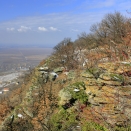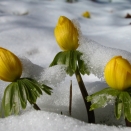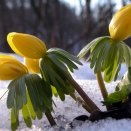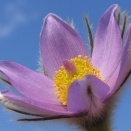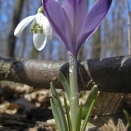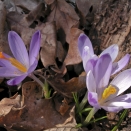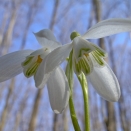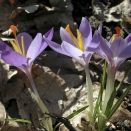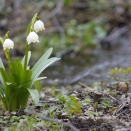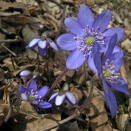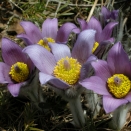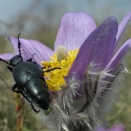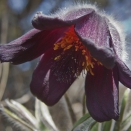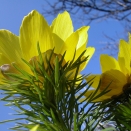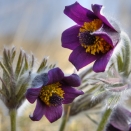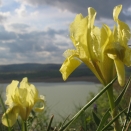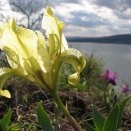Nestled between the Bakony Mountains and Lake Balaton
 Out of a 407,980-hectares administrative area, our public limited company operates on 62,400 hectares, out of which 59,600 hectares are forests. Bakonyerdő Zrt.’s territory is one of the most wooded areas in Hungary after the Nógrád and Zala regions. Our woods are located on eight forestry landscapes, but the majority of our territory is in the following three:
Out of a 407,980-hectares administrative area, our public limited company operates on 62,400 hectares, out of which 59,600 hectares are forests. Bakonyerdő Zrt.’s territory is one of the most wooded areas in Hungary after the Nógrád and Zala regions. Our woods are located on eight forestry landscapes, but the majority of our territory is in the following three:
- High-Bakony (38 percent)
- Bakonyalja (32 percent)
- Northern Pannonhát (22 percent)
On a smaller scale, our forests can also be found near Kis-Balaton (Little Balaton), the Tapolca marsh and the Mezőföld forestry landscape.  In the south, our territory is bordered by Lake Balaton. A slightly dissected coastal zone with a southeast exposure stands out from Lake Balaton’s 104.5-meter elevation above sea level. Mountains dissected by valleys enclose it in the north. The south sides are dry and sparsely covered by trees. The north sides are green and favourable for forestry. The more forested areas of High-Bakony can technically be considered plateaus, from which hills, foothills and ridges stand out. Its highest peak is Kőris Mountain at 704 metres. The Balaton Uplands and the Bakony Mountains experience water scarcity due to their bedrock, and the water supply of the streams is also unstable. The most well-known streams of Bakony are Gerence and Cuha which can dry up by the end of the summer. The 2/3 majority of our forestry areas is situated on hills and ridges, while the remainder 1/3 is on flatland. The latter are constituted by woods in the forestry landscapes of Northern and Southern Pannonhát, Kemenesalja, the Vas-Zala ridge, Mezőföld and Nagyberek-Kisbalaton.
In the south, our territory is bordered by Lake Balaton. A slightly dissected coastal zone with a southeast exposure stands out from Lake Balaton’s 104.5-meter elevation above sea level. Mountains dissected by valleys enclose it in the north. The south sides are dry and sparsely covered by trees. The north sides are green and favourable for forestry. The more forested areas of High-Bakony can technically be considered plateaus, from which hills, foothills and ridges stand out. Its highest peak is Kőris Mountain at 704 metres. The Balaton Uplands and the Bakony Mountains experience water scarcity due to their bedrock, and the water supply of the streams is also unstable. The most well-known streams of Bakony are Gerence and Cuha which can dry up by the end of the summer. The 2/3 majority of our forestry areas is situated on hills and ridges, while the remainder 1/3 is on flatland. The latter are constituted by woods in the forestry landscapes of Northern and Southern Pannonhát, Kemenesalja, the Vas-Zala ridge, Mezőföld and Nagyberek-Kisbalaton. 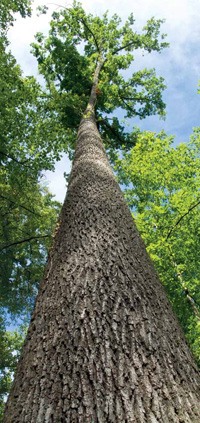 From a silvicultural perspective, there are four climates in Hungary, the names of which derive from the main species of trees that live there. (The basis of climate categorization is the relative humidity measured at 2 PM on July days.). The beech climate constitutes 31%, the hornbeam-oak climate makes up 43% and the turkey oak-sessile oak climate represents 26% of the silvicultural climates on our territory. The currently developing climate models show that the annual average temperatures rise the most in our region, while at the same time, precipitation decreases. Based on this, it can be projected that there will be a climate shift towards the turkey oak-sessile oak climate and the forest steppe climate will also appear, which has not been typical here so far. Soil conditions are also crucial for our woodlands. The most widespread soil types are the following: brown forest soil with clay illuviation (25 percent), rusty brown forest soil (30 percent), brown earth (7 percent), pseudogley brown forest soil (3 percent), rankers (5 percent), rendzinas (21 percent), stony skeletal soil (3 percent), fen soil (1 percent). The composition of the trees of Bakonyerdő is 18% oak, 25% turkey oak, 19% beech, 10% hornbeam, 5% black locust, 12% pine and 11% other. Due to the drought that has affected the Keszthely Hills since 2011 and the consequent fungal infection and woodworm damage, 150-160,000 cubic metres of trees had to be cut down in total.
From a silvicultural perspective, there are four climates in Hungary, the names of which derive from the main species of trees that live there. (The basis of climate categorization is the relative humidity measured at 2 PM on July days.). The beech climate constitutes 31%, the hornbeam-oak climate makes up 43% and the turkey oak-sessile oak climate represents 26% of the silvicultural climates on our territory. The currently developing climate models show that the annual average temperatures rise the most in our region, while at the same time, precipitation decreases. Based on this, it can be projected that there will be a climate shift towards the turkey oak-sessile oak climate and the forest steppe climate will also appear, which has not been typical here so far. Soil conditions are also crucial for our woodlands. The most widespread soil types are the following: brown forest soil with clay illuviation (25 percent), rusty brown forest soil (30 percent), brown earth (7 percent), pseudogley brown forest soil (3 percent), rankers (5 percent), rendzinas (21 percent), stony skeletal soil (3 percent), fen soil (1 percent). The composition of the trees of Bakonyerdő is 18% oak, 25% turkey oak, 19% beech, 10% hornbeam, 5% black locust, 12% pine and 11% other. Due to the drought that has affected the Keszthely Hills since 2011 and the consequent fungal infection and woodworm damage, 150-160,000 cubic metres of trees had to be cut down in total. 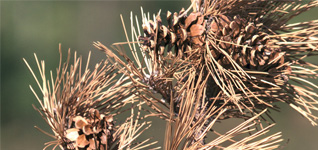 The greater part of this were pine trees planted in the last hundred years, but a significant amount (about 50-60,000 cubic metres) were made up of turkey oaks and beeches. The drought affected approximately 4,000 hectares. We aim to create a more natural habitat in this area than previously. In the place of the felled trees, we will plant downy oaks, flowering ashes and turkey oaks as well as various species of drought-tolerant shrubs in large quantities. There will be areas where, in accordance with the guidelines of the Balaton Uplands National Park Directorate, we will create open and closed rocky grasslands, the size of which will exceed ten hectares.
The greater part of this were pine trees planted in the last hundred years, but a significant amount (about 50-60,000 cubic metres) were made up of turkey oaks and beeches. The drought affected approximately 4,000 hectares. We aim to create a more natural habitat in this area than previously. In the place of the felled trees, we will plant downy oaks, flowering ashes and turkey oaks as well as various species of drought-tolerant shrubs in large quantities. There will be areas where, in accordance with the guidelines of the Balaton Uplands National Park Directorate, we will create open and closed rocky grasslands, the size of which will exceed ten hectares.
Silviculture, Our forestries, CuriositiesNews
A Bakonyerdő Zrt. erdészei 2021. július 29-én Huszárokelőpusztán mérték össze tudásukat, hogy eldőljön ki képviseli az Erdőgazdaságot a 2021. évi országos „Év Erdész” verseny döntőjében.



